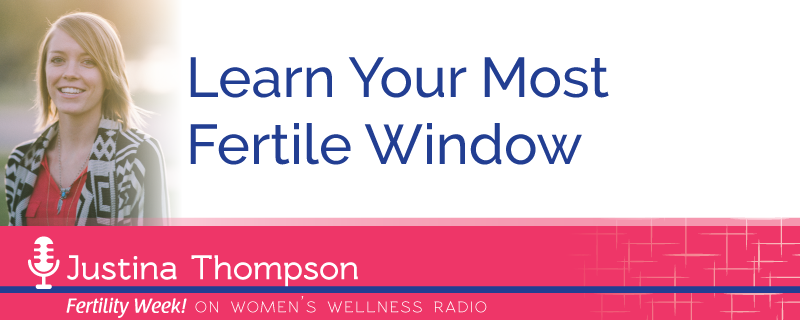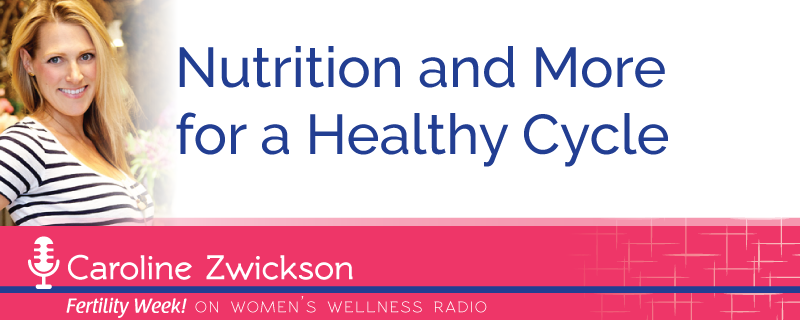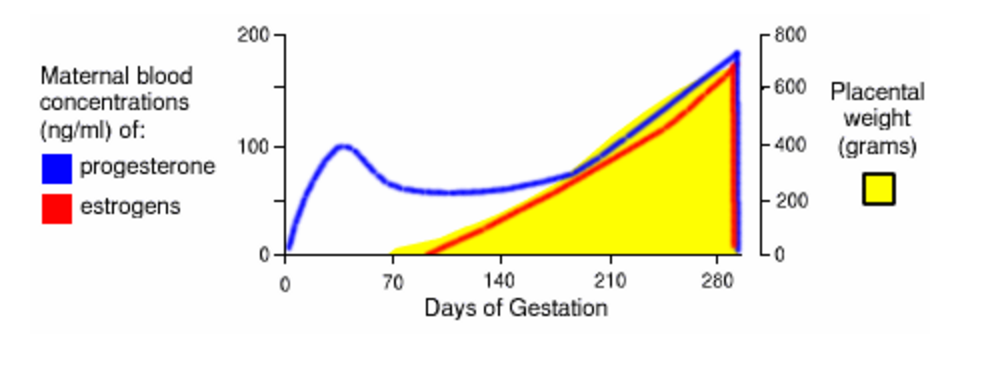I’ve have gotten a few questions in a row about menstrual cramps, so thank you for guiding me on what information you want!
There are two types of menstrual cramps (dysmenorrhea), primary and secondary. I’ll first give some tips on dealing with primary dysmenorrhea, and then cover the sources of secondary dysmenorrhea.
Primary Dysmenorrhea
Primary dysmenorrhea is caused from the normal process of shedding your uterine lining each month with your period. But the degree of pain and cramping varies for each woman, and you can influence the level of pain naturally.
Here’s a bit of background on why menstrual cramps happen from the Physicians’ Committee for Responsible Medicine:
“In the 1960s, it became evident that chemicals called prostaglandins are a central part of the problem. These chemicals are made from the traces of fat stored in cell membranes, and they promote inflammation. They are also involved in muscle contractions, blood vessel constriction, blood clotting, and pain.
Shortly before a period begins, the endometrial cells that form the lining of the uterus make large amounts of prostaglandins. When these cells break down during menstruation, the prostaglandins are released. They constrict the blood vessels in the uterus and make its muscle layer contract, causing painful cramps. Some of the prostaglandins also enter the bloodstream, causing headache, nausea, vomiting, and diarrhea.
Researchers have measured the amount of prostaglandins produced by the endometrial cells and found that it is higher in women with menstrual pain than for women who have little or no pain.”
The article goes on to explain a way to lower prostaglandins through food. How can this be done? Because prostaglandins are produced in the endometrium (aka endometrial lining) of the uterus, and because the endometrium grows in response to estrogen, if we can keep estrogen within a healthy range, then that lining will not overgrow, causing an overproduction in prostaglandins. Pretty cool, right?
Tips for Menstrual Cramps
1. Magnesium for Menstrual Cramps
Your uterus is smooth muscle, and it requires magnesium to cramp smoothly. This is true for labor as well as your monthly period. In addition to relaxing the muscles, it helps calcium be absorbed, and calcium is important for proper muscle function as well.
Due to insufficient minerals in the soil, insufficient greens and healthy foods in the diet and increased mineral need due to bodily stress, most of us are not getting nearly enough magnesium.
When I ask women if they are taking magnesium, they usually say, “Well I’m taking a multivitamin.”
Unless you are taking a multivitamin with several pills included, the chances are you are not getting enough magnesium for your supplementation.
Magnesium is very bulky, and it requires usually four pills to reach the RDA (Recommended Daily Allowance) of 400 mg. If you don’t want to take a handful of pills, there is also magnesium powder that you can mix up with water. If you want a magnesium that is highly absorbable and effective, check out my new favorite magnesium powder here!
Also note the RDA of 400 mg may not be quite enough for you. You can experiment with taking more, and can safely do so long as it does not cause diarrhea. Of course always ask your physician first if you are taking medication or have special conditions.
2. Drink Enough Water
A handful of clients have told me that just drinking more water cured their cramps. It’s a basic, un-sexy tip, but water is important for tissue hydration and detoxification, so it makes sense that it can help.
The usual guideline for how much water to drink is half your body weight in ounces of water. So if you weigh 150 pounds, that’s 75 ounces of water per day. I think there is wiggle room here for less water if you are in cold climate and are no active, and more water if you are in a hot climate and more active.
If you are actively detoxing, you may need more water. That can include the natural process of detoxification that happens in the days before and during your period, and also if you are doing a detoxification protocol with a practitioner.
Please try to drink filtered water, and don’t count coffee, juice or other heavier beverages in your ounces per day. Note that coffee and other caffeinated beverages are actually de-hydrating because they act as a diuretic.
Drink water away from meals as too much fluid with meals dilutes your digestive fluids. Try to sip water to not overwhelm your body with fluid by gulping it down. First thing is the morning is a great time to get hydrated and have a big glass of water. Room temperature and warm is best, and you can add a generous squeeze of lemon of you like.
3. Omega 3 for Menstrual Cramps
Whenever we have pain, including with menstrual cramps, there is usually inflammation.
Omega 3 is great anti-inflammatory substance. It has the ability to manage inflammation over the long-term and also in acute situations. (Source)
For a standard maintenance dosage, 2 soft gel capsules are enough. But if you are coming from a background of lots of inflammation and you’ve never taken omega 3 before, you may want to take 3,000 mg a day for a month.
It’s not well known that omega 3 can be used acutely at higher doses than 1,000 mg. For example if you feel a flu coming on, you can take 3,000 + mg of omega 3 a day, as it fortifies your cells’ walls so they don’t pass the virus. For cramps, you can take a higher dose to help reduce the inflammatory prostaglandin activity.
Another benefit of omega 3 is its ability to regulate the immune system in cases of autoimmune disease. Autoimmune diseases are more common in women, and Hashimoto’s Thyroiditis, an autoimmune thyroid disease, can contribute to estrogen dominance and resulting heavy periods and cramps.
Check out my favorite quality Omega 3 here!
If you are allergic to fish or on a vegetarian diet, you can take a DHA / EPA oil (these are two types of beneficial fat found in fish oil) made from algae instead of fish.
4. Anti-inflammatory Diet
Please don’t follow tips 1 - 3 without also creating a stable base with an anti-inflammatory diet. A big, big reason that women have menstrual pain is due to tissue inflammation from an inflammatory diet. Inflammation blocked hormone receptors, causing hormone imbalance.
Foods to avoid:
The whites- white bread, pasta, pastries and sugar
The drinks- wine, beer, juices, sodas, sweetened coffees and teas
The oils- seed oils like canola oil are inflammatory are found in most processed foods and restaurant foods
Foods to increase include:
Fatty fish like wild salmon and anchovies
Green vegetables
Berries like raspberry and blueberry
Fresh nuts and seeds like chia seeds and walnuts
Herbs like clove, ginger, cinnamon and rosemary
Foods high in fiber help clear excess circulating estrogen through the gut. As you learned earlier, keeping estrogen levels in a healthy range can reduce menstrual cramps caused by high prostaglandins.
Other Reason for Menstrual Cramps (Secondary Dysmenorrhea)
A. Uterine Positioning
As you can hear about in my interview with Rachel Eyre, if your uterus is adhered to other tissues and can’t move freely, it is forced to twist which can cause you pain. But you can treat that with specialized massage, castor oil packs or yoni steams, as Rachel explains.
The whole interview is great, but I’ll point out that at minute 22 we start to talk about cramps, and at minute 35 we talk about techniques that can help.
B. Endometriosis
Endometriosis can cause extreme pain, and also pain with intercourse, or bowel pain. If your cramps require prescription painkillers and days off work, you may need to find a practitioner to help determine if you have endometriosis.
Endometriosis occurs when endometrial tissue (the tissue that lines your inner uterus) is found outside the uterus. This misplaced tissue adheres to other tissues, and the endometrial tissue also responds to changes in your hormone levels with bleeding and inflammation.
Here is an article by our friend Melissa Turner at Endo Empowered about how to ready yourself for your period if you do have endometriosis. Some of the tips match mine above, but she has some great new ones too, including using warming herbs and exercise. Melissa and I also recorded a video on turmeric, which is another herb she uses to reduce inflammation and pain.
C. Adenomyosis
In this condition, the endometrial lining embeds within the uterine muscle, causing period pain or lingering pain after sex. Risk factors for adenomyosis are genetics, estrogen dominance, childbirth or a surgical cut into the uterus. An ultrasound or MRI scan can help with diagnosis.
D. Fibroids
Fibroids are tumors of the uterus that are non-cancerous 99% of the time. Up to 80% of women experience fibroids, and most women will be symptom free. Dark-skinned women have a greater chance of having fibroids. This is theorized to be related to low vitamin D levels in dark-skinned women, emphasizing the importance of vitamin D to our hormonal balance.
The mechanism of fibroids is not totally understood, but they grow under the influence of estrogen, so women with estrogen dominance are susceptible. Estrogen dominance is very common as women approach menopause, so women in their 40s are prone to fibroids.
Uterine fibroids can occur within the walls of the uterus, inside the uterus or outside the uterus. Fibroids can cause menstrual pain, pelvic pain, heavy bleeding, abnormal bleeding, fatigue and anemia.
We have a great interview on the subject with Dr. Allan Warshowsky here.
E. Copper IUD (Intrauterine Device)
I use a copper IUD for birth control and have very rarely experienced pain from it. But I have heard stories from other women in which they reacted very poorly to their IUD, having pain and heavy bleeding. This seems to be more common in younger women who have not gone through childbirth.
If you recently got a copper IUD, you may need a few months to adjust. If you suspect it is still a problem, consult with your physician. Also consider following my four tips above before you throw in the towel.
F. Pelvic Inflammatory Disease (PID)
If you have an untreated infection it can cause increased pain with your periods. Pelvic Inflammatory Disease occurs mainly due to STD (sexually transmitted disease), but can also occur after childbirth and pelvic surgeries, including abortions. It can cause cause infertility and can seriously stress your other body systems. According to Wed MD, one million American women experience PID each year.
Other symptoms of PID could be abdominal pain, painful urination, pain after sex, yellow or green vaginal discharge, chills/fever and nausea/vomiting. If you suspect a PID, see a doctor. And always practice protected sex with an untested partner. (Source)
G. Cervical Stenosis
I have never encountered this cause in my years or work, but it is a possible cause so I will share it. Cervical stenosis is a narrow or narrowing of the cervix, the lower portion of the uterus. If this area is narrow and your menstrual blood is trying to pass, this can case increased pain.
H. Uterine Shape
Some women have an irregularly shaped uterus that can lead to increased menstrual pain. These abnormalities are: bicornuate uterus (two uteri that lead to one cervix), septate uterus (normal uterus with a fibrous band of tissue bisecting it), unicornuate uterus (a uterus that develops from only one mullerian duct), uterus didelphys (two uteri, two cervices, and a septum, or membrane, dividing the vaginal canal). (Source)
These conditions can be diagnosed by medical imaging, and are sometimes diagnosed during a C section.
I hope this article helps you get out of some monthly distress!
How to Reduce Inflammation: the Inflammation Repair Kit
Are you ready to get rid of inflammation? The Inflammation Repair Kit includes three products that work together to strongly reduce inflammation and get you on the road to better health.
Omega Concentrate
Pure PC
Magnesium Bisglycinate Chelate
These are the most effective anti-inflammatory supplements I have ever found and I used them in my recovery from toxin mold. These are effective for headaches, menstrual cramps, joint or muscle pain, and more. This kit is also helpful for general detox support.
Have you discovered some tips that helps with mentrual cramps? Share them with is in the comments below!



![Omega_Concentrate__40058.1592927171[1].jpg](https://images.squarespace-cdn.com/content/v1/53b1df7ee4b0dc3e7be6bb86/1599937837406-UAML3GHTEHUR0HXBPKP9/Omega_Concentrate__40058.1592927171%5B1%5D.jpg)
![Inflammation-Kit__82984.1600121059[1].jpg](https://images.squarespace-cdn.com/content/v1/53b1df7ee4b0dc3e7be6bb86/1600273713885-K78LL9X7JCQ2B3BJL2I3/Inflammation-Kit__82984.1600121059%5B1%5D.jpg)














































